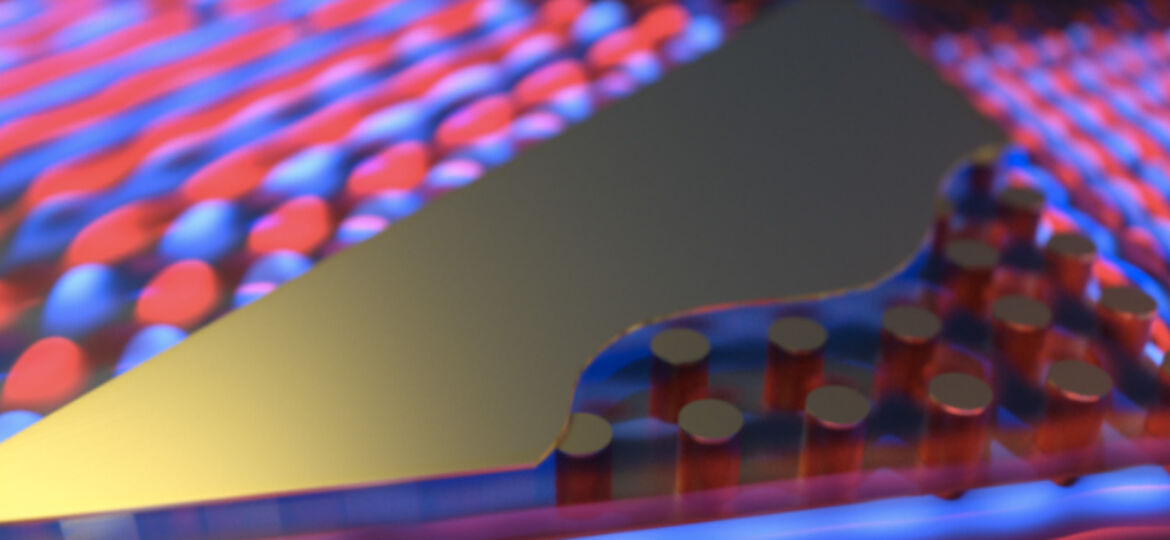
A new on chip metamaterial paves the way for computers that are a million times faster than today’s platforms
For the first time, physicists have designed an on-chip ‘metamaterial’ – a class of materials that display properties not found in nature – with a refractive index of zero, paving the way for light-based computers to transmit information at infinitely fast speeds.
Light is the fastest thing in the Universe that can be used to transmit information, but if we want to replace our current electron-based computers with light-based ones, we’re going to have to overcome a fundamental problem. Once information is delivered to your computer or router in the form of a photon (or light particle), it has to be converted into electrons before it can be processed, and this slows everything down to the point where you’re losing a great deal of the speed you gained from using light in the first place.
We’ve about hit the limits for what our current electron-based computers can achieve, so scientists around the world are trying to figure out how to build a whole new class of light-based computers. And now a team from Harvard University in the US has made major progress towards this goal, inventing a new type of Metamaterial with a refraction index of zero that allows light to be manipulated in unprecedented detail on a computer chip.
“Light doesn’t typically like to be squeezed or manipulated, but this metamaterial permits you to manipulate light from one chip to another, to squeeze, bend, twist and reduce diameter of a beam from the macroscale to the nanoscale,” said lead researcher and physicist, Eric Mazur.
“It’s a remarkable new way to manipulate light.”
Made from silicon pillar arrays that have been embedded in a polymer matrix and wrapped in gold film, this new material has a refractive index of zero, which allows light particles to travel through it “infinitely fast” according to the team that developed it, without violating the known laws of physics.
We all know that light travels at, well, the speed of light, which is 299,792,458 metres per second. But the speed that light travels is also measured by how fast its wavelength crests are moving through a material – known as phase velocity. This shows us the degree to which a wavelength of light is condensed or elongated by the material it’s travelling through, which will have an effect on how fast it’s travelling.
For example, when light passes through water, its phase velocity is reduced as its wavelengths get squished, or condensed, together because water is more dense than the atmosphere. Once the light exits the water, its phase velocity increases as its wavelengths are allowed to elongate once more.
We measure how much the crests of a light wave slow down in a certain material via a ratio called the refraction index. If you’ve got a material that interferes heavily with the propagation of the wavelength crests, its refraction index will be high. Because water doesn’t interfere too much, its refraction index is quite low – about 1.3.
So what happens when you make a material that has a refractive index of zero, which means no interference whatsoever? Things, quite simply, get strange.
“As light passes through it, the crests and troughs stretch infinitely to create a flat line where oscillations occur as a factor of time, not space. Flattening the wavelength allows the light to be easily manipulated without losing energy. The industrial potential – from telecommunications to quantum computing – is nearly limitless.”
Described in Nature Photonics, the new material doesn’t just have great potential for bringing purely light-based computers into reality, it could also have really interesting application for quantum computing.
“In quantum optics, the lack of phase advance would allow quantum emitters in a zero-index cavity or waveguide to emit photons that are always in phase with one another,” says one of the researchers, Philip Munoz.
“It could also improve entanglement between quantum bits, as incoming waves of light are effectively spread out and infinitely long, enabling even distant particles to be entangled.”
It might take us some time yet to get there, but rest assured, light based computers are coming, which means we’re getting computers and smartphones that will run millions of times faster than they do now.

















And the faster computers go, the less programmers worry about optimizing their code. “Check out my new optic computer system!! I’m still getting lag playing Call of Duty though.. :(“